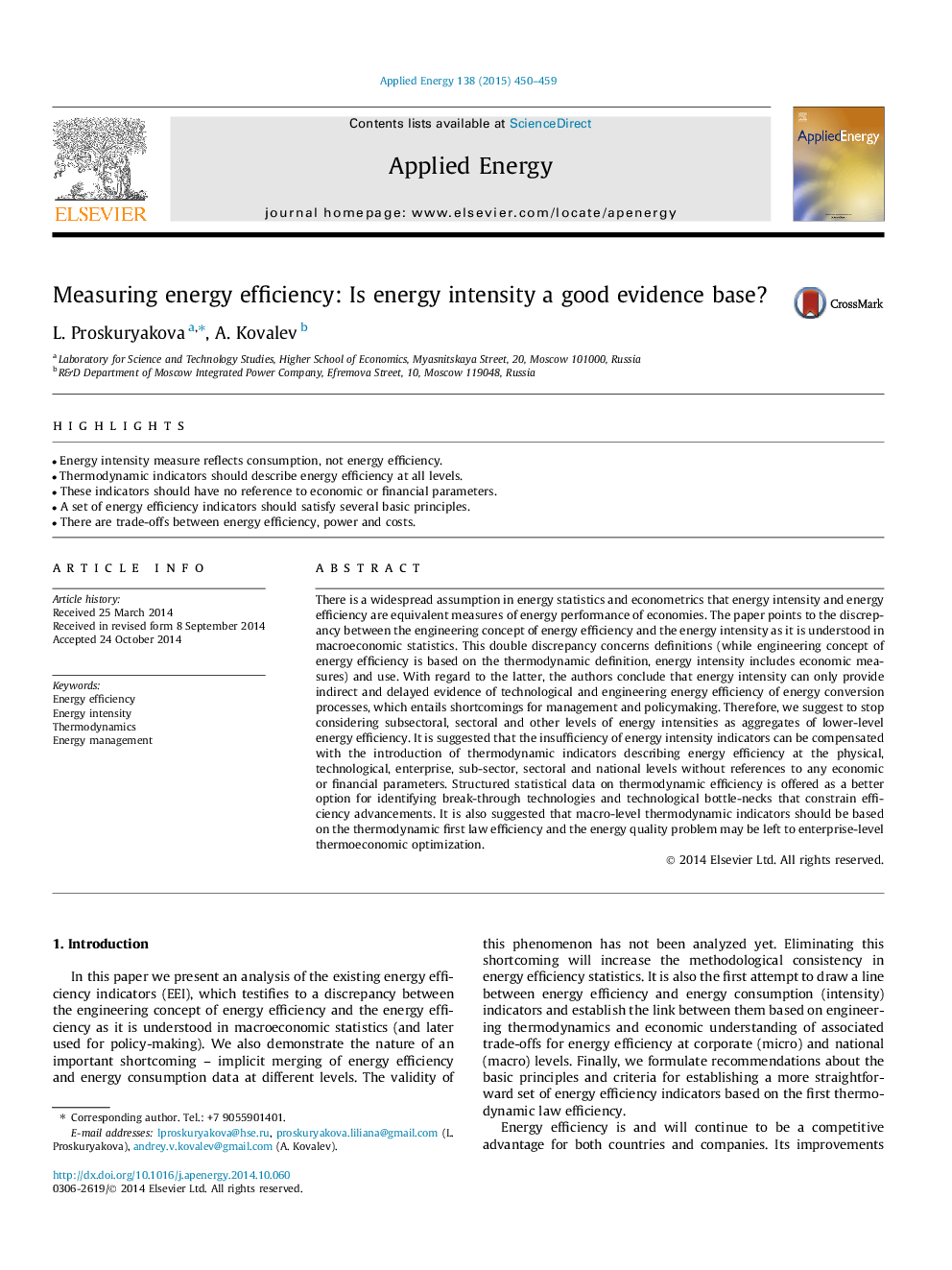| Article ID | Journal | Published Year | Pages | File Type |
|---|---|---|---|---|
| 6688342 | Applied Energy | 2015 | 10 Pages |
Abstract
There is a widespread assumption in energy statistics and econometrics that energy intensity and energy efficiency are equivalent measures of energy performance of economies. The paper points to the discrepancy between the engineering concept of energy efficiency and the energy intensity as it is understood in macroeconomic statistics. This double discrepancy concerns definitions (while engineering concept of energy efficiency is based on the thermodynamic definition, energy intensity includes economic measures) and use. With regard to the latter, the authors conclude that energy intensity can only provide indirect and delayed evidence of technological and engineering energy efficiency of energy conversion processes, which entails shortcomings for management and policymaking. Therefore, we suggest to stop considering subsectoral, sectoral and other levels of energy intensities as aggregates of lower-level energy efficiency. It is suggested that the insufficiency of energy intensity indicators can be compensated with the introduction of thermodynamic indicators describing energy efficiency at the physical, technological, enterprise, sub-sector, sectoral and national levels without references to any economic or financial parameters. Structured statistical data on thermodynamic efficiency is offered as a better option for identifying break-through technologies and technological bottle-necks that constrain efficiency advancements. It is also suggested that macro-level thermodynamic indicators should be based on the thermodynamic first law efficiency and the energy quality problem may be left to enterprise-level thermoeconomic optimization.
Related Topics
Physical Sciences and Engineering
Energy
Energy Engineering and Power Technology
Authors
L. Proskuryakova, A. Kovalev,
